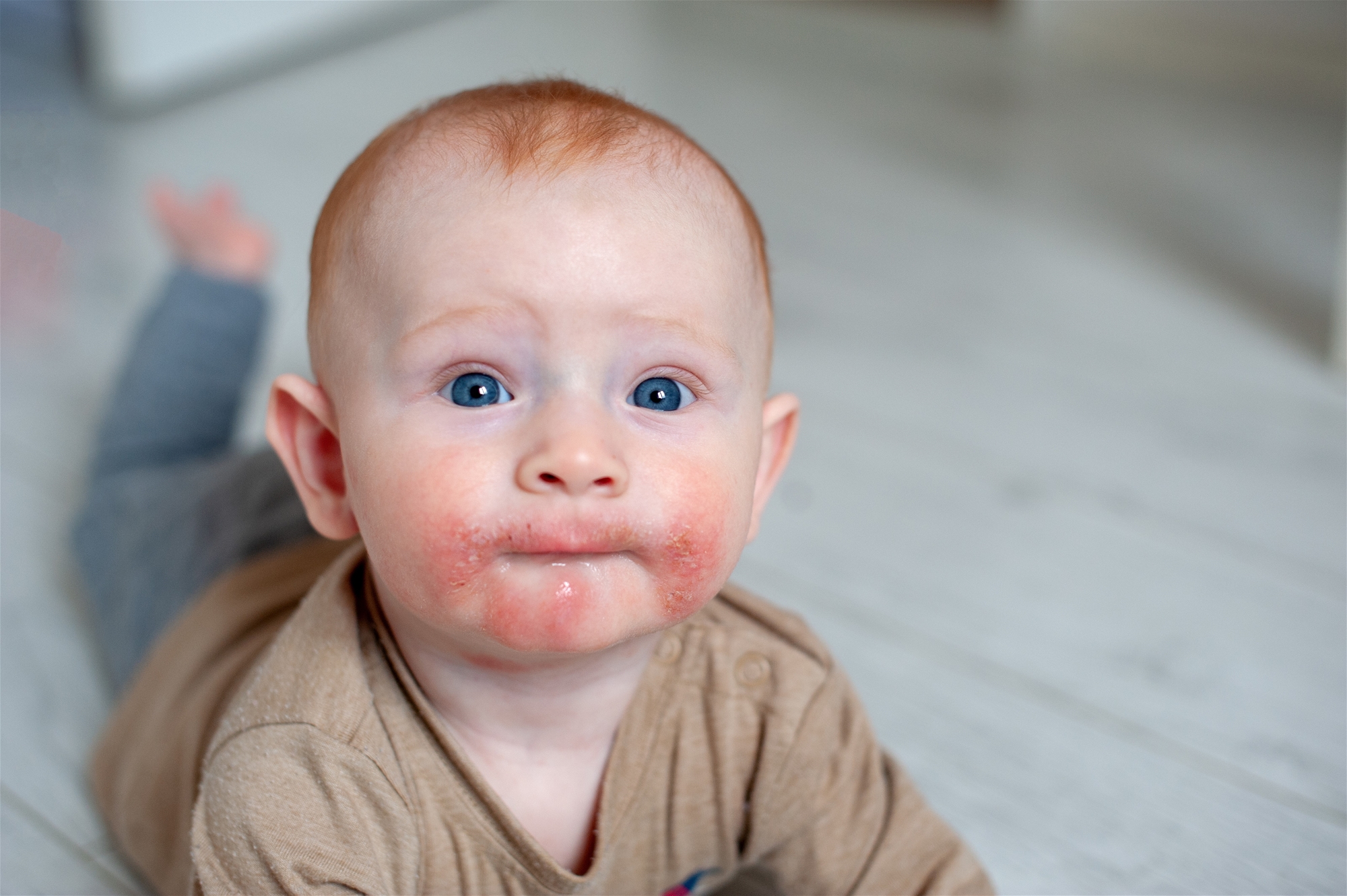Patients with atopic dermatitis and their family may be prone to asthma, hay fever, allergic rhinitis or atopic dermatitis. The cause of the inflammation, though unknown, is related to heredity and environment. The symptoms may change with age in terms of chronic growth, distribution and morphology. Itchiness is the primary clinical symptom and may worsen in winter.
Clinical manifestations can be divided into three types:
- Infants: Mild flushing occurs in the neck, dry, cracked face is accompanied by papules, itching leads to exudates or scabs, and most will gradually heal naturally.

- Children: Itchy papules occur, skin defects and scabs are caused by scratching papules. Sometimes, lichenified skin with obvious boundary occurs in wrinkles of skin such as the elbow fossa.
- Adults: The lesion is similar to that in infants; the fused papules become lichenified with scattered epidermal exfoliative papules around; and when it worsens, it may have wet exudates or scab formation. It usually occurs on the face, side neck, hand or dorsum of foot.
The treatment of atopic dermatitis is mainly to reduce deteriorating factors:
- In summer, the weather is hot and humid. Sweat can irritate the skin. Therefore, it is necessary to reduce the chance of patients sweating in the sun. The patients should wipe their sweat with a smooth towel.
- The dry weather in winter will make the skin of atopic dermatitis more dry and cracked. So in winter, pay attention to the humidity in the air and apply lotion more.
- Do not wear clothing materials (such as sweaters) that cause itching.
- Carpets should not be laid at home to avoid dirt and the chance of allergen accumulation.
- Avoid excessive wash (including excessive use of detergent and bathing).
- Do not make the patient anxious or overly tired.
- In terms of diets, try to reduce consumption of wheat, eggs, milk, tomatoes, food with too much seasoning, or stimulants such as coffee, tea, and alcohol.
In addition to the above precautions, consult a dermatologist for diagnosis and treatment.
Therapeutic Principles
- Alleviate itching: Take antihistamines orally, do not scratch the affected area.
- Rebuild skin barrier function: Develop the habit of applying moisturizing body lotion after bathing, regardless of lesions.
- Prevent and treat bacterial infections: Clean the skin and apply antibiotic ointment to the wound.
- Treat inflammation: When the lesion is severe, apply topical steroid ointment.
- Treat inflammation: When the lesion is severe, apply topical steroid ointment, or oral and intravenous immunosuppresants.

